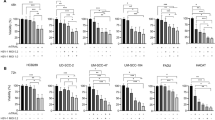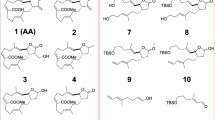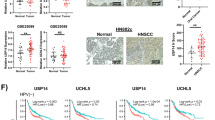Abstract
Combining the use of a chemotherapeutic agent with oncolytic virotherapy is a useful way to increase the efficiency of the treatment of cancer. The effect of the histone diacetylase (HDAC) inhibitor trichostatin A (TSA) on the antitumor activity of a herpes simplex virus type-1 (HSV-1) mutant was examined in oral squamous cell carcinoma (SCC) cells. Immunoblotting analysis and immunoflourescence staining revealed that a cytoplasmic nuclear factor-κB (NF-κB) component, p65, translocated into the nucleus after infection with γ134.5 gene-deficient HSV-1 R849, indicating that R849 activated NF-κB. TSA induced acetylation of p65 and increased the amount of p65 in the nucleus of oral SCC cells. Treatment of R849-infected cells with TSA also increased the amount of nuclear p65 and binding of NF-κB to its DNA-binding site and an NF-κB inhibitor SN50 diminished the increase in nuclear p65. In the presence of TSA, the production of virus and the expression of LacZ integrated into R849 and glycoprotein D, but not ICP0, ICP6 and thymidine kinase, were increased. The viability of cells treated with a combination of R849 and TSA was lower than that of those treated with R849 only. After treatment with TSA, expression of the cell cycle kinase inhibitor p21 was upregulated and the cell cycle was arrested at G1. These results indicate that TSA enhanced the replication of the HSV-1 mutant through the activation of NF-κB and induced cell cycle arrest at G1 to inhibit cell growth. TSA can be used as an enhancing agent for oncolytic virotherapy for oral SCC with γ134.5 gene-deficient HSV-1.
This is a preview of subscription content, access via your institution
Access options
Subscribe to this journal
Receive 12 print issues and online access
$259.00 per year
only $21.58 per issue
Buy this article
- Purchase on Springer Link
- Instant access to full article PDF
Prices may be subject to local taxes which are calculated during checkout








Similar content being viewed by others
References
Kirn D, Marutuza RL, Zwiebel J . Replication-selective virotherapy for cancer: biological principles, risk management and future directions. Nat Med 2001; 7: 781–787.
MacLean AR, ul-Fareed M, Robertson L, Harland J, Brown SM . Herpes simplex virus type 1 deletion variants 1714 and 1716 pinpoint neurovirulence-related sequences in Glasgow strain 17+ between immediate early gene 1 and the ‘a’ sequence. J Gen Virol 1991; 72: 631–639.
Chou J, Kern ER, Whitley RJ, Roizman B . Mapping of herpes simplex virus-1 neurovirulence to gamma 134.5, a gene nonessential for growth in culture. Science 1990; 250: 1262–1266.
Chahlavi A, Todo T, Martuza RL, Rabkin SD . Replication-competent herpes simplex virus vector G207 and cisplatin combination therapy for head and neck squamous cell carcinoma. Neoplasia 1999; 1: 162–169.
Fu X, Tao L, Jin A, Vile R, Brenner MK, Zhang X . Expression of a fusogenic membrane glycoprotein by an oncolytic herpes simplex virus potentiates the viral antitumor effect. Mol Ther 2003; 7: 748–754.
Aghi M, Rabkin S, Martuza RL . Effect of chemotherapy-induced DNA repair on oncolytic herpes simplex viral replication. J Natl Cancer Inst 2006; 98: 38–50.
McKee TD, Grandi P, Mok W, Alexandrakis G, Insin N, Zimmer JP et al. Degradation of fibrillar collagen in a human melanoma xenograft improves the efficacy of an oncolytic herpes simplex virus vector. Cancer Res 2006; 66: 2509–2513.
Liu TC, Zhang T, Fukuhara H, Kuroda T, Todo T, Canron X et al. Dominant-negative fibroblast growth factor receptor expression enhances antitumoral potency of oncolytic herpes simplex virus in neural tumors. Clin Cancer Res 2006; 12: 6791–6799.
Naito S, Obayashi S, Sumi T, Iwai S, Nakazawa M, Ikuta K et al. Enhancement of antitumor activity of herpes simplex virus γ134.5-deficient mutant for oral squamous cell carcinoma cells by hexamethylene bisacetamide. Cancer Gene Ther 2006; 13: 780–791.
Baldwin Jr AS . The NF-kappa B and I kappa B proteins: new discoveries and insights. Annu Rev Immunol 1996; 14: 649–683.
Ghosh S, May MJ, Kopp EB . NF-kappa B and Rel proteins: evolutionarily conserved mediators of immune responses. Annu Rev Immunol 1998; 16: 225–260.
Adam E, Quivy V, Bex F, Chariot A, Collette Y, Vanhulle C et al. Potentiation of tumor necrosis factor-induced NF-kappa B activation by deacetylase inhibitors is associated with a delayed cytoplasmic reappearance of I kappa B alpha. Mol Cell Biol 2003; 23: 6200–6209.
Hayden MS, Ghosh S . Signaling to NF-kappaB. Genes Dev 2004; 18: 2195–2224.
Israël A . The IKK complex: an integrator of all signals that activate NF-kappaB? Trends Cell Biol 2000; 10: 129–133.
Jung M . Inhibitors of histone deacetylase as new anticancer agents. Curr Med Chem 2001; 8: 1505–1511.
Marks P, Rifkind RA, Richon VM, Breslow R, Miller T, Kelly WK . Histone deacetylases and cancer: causes and therapies. Nat Rev Cancer 2001; 1: 194–202.
Bolden JE, Peart MJ, Johnstone RW . Anticancer activities of histone deacetylase inhibitors. Nat Rev Drug Discov 2006; 5: 769–784.
Duan J, Friedman J, Nottingham L, Chen Z, Ara G, Van Waes C . Nuclear factor-kappaB p65 small interfering RNA or proteasome inhibitor bortezomib sensitizes head and neck squamous cell carcinomas to classic histone deacetylase inhibitors and novel histone deacetylase inhibitor PXD101. Mol Cancer Ther 2007; 6: 37–50.
Kim DH, Lee J, Kim KN, Kim HJ, Jeung HC, Chung HC et al. Anti-tumor activity of N-hydroxy-7-(2-naphthylthio) heptanomide, a novel histone deacetylase inhibitor. Biochem Biophys Res Commun 2007; 356: 233–238.
Chen L, Fischle W, Verdin E, Greene WC . Duration of nuclear NF-kappaB action regulated by reversible acetylation. Science 2001; 293: 1653–1657.
Vigushin DM, Ali S, Pace PE, Mirsaidi N, Ito K, Adcock I et al. Trichostatin A is a histone deacetylase inhibitor with potent antitumor activity against breast cancer in vivo. Clin Cancer Res 2001; 7: 971–976.
Henderson C, Mizzau M, Paroni G, Maestro R, Schneider C, Brancolini C . Role of caspases, Bid, and p53 in the apoptotic response triggered by histone deacetylase inhibitors trichostatin-A (TSA) and suberoylanilide hydroxamic acid (SAHA). J Biol Chem 2003; 278: 12579–12589.
Zhao Y, Tan J, Zhuang L, Jiang X, Liu ET, Yu Q . Inhibitors of histone deacetylases target the Rb-E2F1 pathway for apoptosis induction through activation of proapoptotic protein Bim. Proc Natl Acad Sci USA 2005; 102: 16090–16095.
Patel A, Hanson J, McLean TI, Olgiate J, Hilton M, Miller WE et al. Herpes simplex type 1 induction of persistent NF-kappa B nuclear translocation increases the efficiency of virus replication. Virology 1998; 247: 212–222.
Amici C, Rossi A, Costanzo A, Ciafre S, Marinari B, Balsamo M et al. Herpes simplex virus disrupts NF-kappaB regulation by blocking its recruitment on the IkappaBalpha promoter and directing the factor on viral genes. J Biol Chem 2006; 281: 7110–7117.
Goodkin ML, Ting AT, Blaho JA . NF-kappaB is required for apoptosis prevention during herpes simplex virus type 1 infection. J Virol 2003; 77: 7261–7280.
Taddeo B, Luo TR, Zhang W, Roizman B . Activation of NF-kappaB in cells productively infected with HSV-1 depends on activated protein kinase R and plays no apparent role in blocking apoptosis. Proc Natl Acad Sci USA 2003; 100: 12408–12413.
Andreansky S, Soroceanu L, Flotte ER, Chou J, Markert JM, Gillespie GY et al. Evaluation of genetically engineered herpes simplex viruses as oncolytic agents for human malignant brain tumors. Cancer Res 1997; 57: 1502–1509.
Starenki D, Namba H, Saenko V, Ohtsuru A, Yamashita S . Inhibition of nuclear factor-kappaB cascade potentiates the effect of a combination treatment of anaplastic thyroid cancer cells. J Clin Endocrinol Metab 2004; 89: 410–418.
Archer SY, Meng S, Shei A, Hodin RA . p21(WAF1) is required for butyrate-mediated growth inhibition of human colon cancer cells. Proc Natl Acad Sci USA 1998; 95: 6791–6796.
Richon VM, Sandhoff TW, Rifkind RA, Marks PA . Histone deacetylase inhibitor selectively induces p21WAF1 expression and gene-associated histone acetylation. Proc Natl Acad Sci USA 2000; 97: 10014–10019.
Smith KD, Mezhir JJ, Bickenbach K, Veerapong J, Charron J, Posner MC et al. Activated MEK suppresses activation of PKR and enables efficient replication and in vivo oncolysis by Delta gamma(1)34.5 mutants of herpes simplex virus 1. J Virol 2006; 80: 1110–1120.
Chou J, Chen JJ, Gross M, Roizman B . Association of a M(r) 90 000 phosphoprotein with protein kinase PKR in cells exhibiting enhanced phosphorylation of translation initiation factor eIF-2 alpha and premature shutoff of protein synthesis after infection with gamma 134.5-mutants of herpes simplex virus 1. Proc Natl Acad Sci USA 1995; 92: 10516–10520.
Gregory D, Hargett D, Holmes D, Money E, Bachenheimer SL . Efficient replication by herpes simplex virus type 1 involves activation of the IkappaB kinase-IkappaB-p65 pathway. J Virol 2004; 78: 13582–13590.
Honess RW, Roizman B . Regulation of herpesvirus macromolecular synthesis. I. Cascade regulation of the synthesis of three groups of viral proteins. J Virol 1974; 14: 8–19.
Mace AT, Ganly I, Soutar DS, Brown SM . Potential for efficacy of the oncolytic herpes simplex virus 1716 in patients with oral squamous cell carcinoma. Head Neck 2008; 30: 1045–1051.
Schang LM . Effects of pharmacological cyclin-dependent kinase inhibitors on viral transcription and replication. Biochim Biophys Acta 2004; 1697: 197–209.
Liu TC, Castelo-Branco P, Rabkin SD, Martuza RL . Trichostatin A and oncolytic HSV combination therapy shows enhanced antitumoral and antiangiogenic effects. Mol Ther 2008; 16: 1041–1047.
Acknowledgements
This investigation was supported in part by a Grant-in-Aid for Scientific Research from the Ministry of Education, Science and Culture of Japan.
Author information
Authors and Affiliations
Corresponding author
Rights and permissions
About this article
Cite this article
Katsura, T., Iwai, S., Ota, Y. et al. The effects of trichostatin A on the oncolytic ability of herpes simplex virus for oral squamous cell carcinoma cells. Cancer Gene Ther 16, 237–245 (2009). https://doi.org/10.1038/cgt.2008.81
Received:
Revised:
Accepted:
Published:
Issue Date:
DOI: https://doi.org/10.1038/cgt.2008.81
Keywords
This article is cited by
-
Effects of Trichostatin A on the Chondrogenesis from Human Mesenchymal Stem Cells
Tissue Engineering and Regenerative Medicine (2017)
-
Combination of the oral histone deacetylase inhibitor resminostat with oncolytic measles vaccine virus as a new option for epi-virotherapeutic treatment of hepatocellular carcinoma
Molecular Therapy - Oncolytics (2015)
-
Intelligent Design: Combination Therapy With Oncolytic Viruses
Molecular Therapy (2010)
-
Histone deacetylases in viral infections
Clinical Epigenetics (2010)



